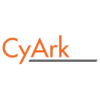Hook/Introductory Activity
Take your class on a field trip to a California mission (the closest to your school). A guided tour is always helpful. As the students explore the site, ask them to consider the following question:
What function does each area of the mission serve? How many areas do you see? Encourage students to take notes as they walk through the mission.
Note: If you are not located in California or near a California mission, then prompt the students with the same question as they dive into the first step of the lesson: exploring CyArk’s archive of missions along El Camino Real.
Lesson 1
Introduce students to CyArk’s El Camino Real de California theme. Between the years 1683 and 1834, Spanish missionaries on the west coast of Mexico and California established numerous religious outposts, each within a day’s ride from the next along what we call El Camino Real, translating to “The Royal Highway” or “The King’s Highway” in Spanish. These outposts today serve as concrete physical reminders of Spanish occupation and presence in California, and are visually representative of California’s Spanish colonial history. Running parallel to the San Andreas Fault, these outposts along El Camino Real de California include 21 missions, 4 presidios, and 3 pueblos, all of which are under threat of destruction. Several original structures have already been lost to earthquakes, and many remaining structures are seismically unstable. These sites mark 600 miles of the California coast, and all are vital in the telling of California’s history as we know it today.
Divide the class into groups, and assign each group a mission site from CyArk’s website. This mission should be different from the mission they visited in the Introductory Activity. As the groups explore their mission site (learning the history, viewing photographs, and visualizing 3D data), they will compare their site with the site they visited in the Introductory Activity. Groups will complete Worksheet 1 as they compare all similarities and differences they notice between the two sites. After they make their lists, ask the groups to think of what makes a mission a mission—what areas do all missions have? What elements are the most important to have, and what elements are secondary in the construction of a mission?
In turn, each group will share with the class their list of mission “requirements,” creating a class list of all common elements, features, and resources within the California missions studied.
Lesson 2
Introduce the class to Google SketchUp, a user-friendly tool for 3D drawing. If this is a new program for your class, an introductory lesson may be useful before they begin this activity. Information about the program and options for downloads are available at: http://www.sketchup.com/
- An alternative 3D creation tool is MineCraft, a virtual gaming environment where participants may build and interact with their own structures: https://minecraft.net/. If you teach a high school class or a class with a strong technology background, you may want to consider MineCraft for this lesson.
In groups, students will combine all elements that are important to a mission’s design as they design and create a drawing/model of their own imaginary mission. A fun take on this activity is for the group to combine all their favorite aspects of the missions to create an ideal mission. Whichever method is selected, their model must be complete with the following categories (all included on the Student Mission Worksheet):
- Culturally/geographically appropriate name and location
- Convincing rationale for its existence (why is it located where it is, why is it unique, and what is its history/relationship to other missions along El Camino Real)
- A descriptive paragraph introducing the mission to visitors and a site map with area descriptions
After each group has completed an initial drawing, redirect the class to CyArk’s 3D viewer content and architectural drawings. The groups will refine their own drawings based on the measurements they take from CyArk’s interactive models—this provides the groups with a basis for standardized door height, enclosure walls, etc. Encourage students to be creative in how they interact with the 3D models. They can use it to confirm measurements, or to imitate architectural details like sculptures. This is an explorative activity, so the students should not be concerned about imitating an existing mission, but rather embellishing and providing justifications for their own.
Each group will present their final drawing/model to the class. Group presentation will include an explanation of the mission’s history, design, and its role along El Camino Real de California.
Writing Assignment Prompt: Given what you know about what the California missions have in common and how they differ, how has Spanish Colonial architecture influenced California buildings today? What elements do we see in more recent buildings that remind us of our Spanish history? What has changed? Do you notice any Spanish colonial features in non-colonial structures? What does Spanish Colonial architecture evoke for you? Respond in a well-composed essay.

